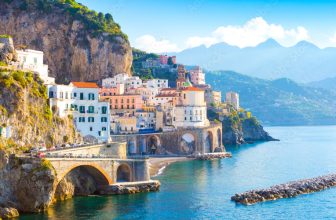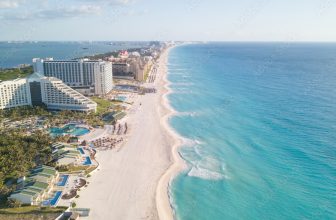
The Great Barrier Reef is the largest coral reef system in the world and contains over 2,900 individual reefs and 900 islands. It covers 344,400 square kilometers, stretching over 2,300 kilometres. This amazing sight is well worth the trip, so make sure you visit soon. Here’s some information about it:
Climate change
In a new study, scientists have estimated that the Great Barrier Reef is nearing the end of its life. A series of disasters have caused the coral to die, with only 2% of the reef having recovered since 1998. This is not the first time the Great Barrier Reef has been affected by climate change, with coastal development and agricultural pollution also contributing to coral bleaching. However, the study showed that the reef’s health could still improve in the future, as long as global warming doesn’t exceed 1.5 degrees Celsius.
The Australian government is already facing pressure to reduce carbon emissions, and some of its leaders have already made pledges to help the reef. One such move was the UNESCO decision to put the Reef on its endangered world heritage list. The Australian and Queensland state governments responded with a plan to improve the local marine environment, a move that has met with criticism. But, while Australia pledged $1 billion over nine years to help the Reef, critics have criticized the decision. They point out that the money will not address the main threat to coral, which is rising ocean temperatures. Moreover, climate change has become an increasingly common issue, and a rise in CO2 levels will increase the risk of bleaching.
The solution could lie in large-scale intervention, such as spraying mist to reduce greenhouse gas emissions. In addition to the nozzles, scientists could also deploy a fleet of mist machines to the area to help cool the water and protect the reef. As long as the governments work to reduce greenhouse gas emissions, a fleet of mist machines could help protect the Great Barrier Reef for many more years. The next challenge, however, will be determining if the solution will work in the real world.
Anthropogenic eutrophication
Recent studies have found significant increases in phytoplankton concentrations in a Great Barrier Reef lagoon near the Low Isles. Once dominated by centric diatoms, the organisms have changed to pennate and small flagellates. These changes are attributed to anthropogenic eutrophication. Most likely, the cause of eutrophication is runoff from agricultural developments. Such eutrophication is a threat to the reefs and must be addressed.
The GBRMPA has finally recognized the problem of eutrophication and implemented measures to mitigate the effects of eutrophication. While significant action has been taken to regulate river runoff, the organization has not given sufficient attention to point-source discharges or factors that promote the growth of algae and other organisms. Wastewater treatment plants in coastal areas discharge large amounts of P. In fact, one WWTP, Luggage Point WWTP, discharges 300 tons of P each year.
In the past century, eutrophication in the Great Barrier Reef has reduced hard coral cover by 70%. While this reduction may be alarming, many marine scientists and Great Barrier Reef authorities were deluding the phenomenon for years. But recent research shows that chronic eutrophication has contributed to the dramatic reduction in the GBR’s hard coral cover. Moreover, some reefs in the far north of the Great Barrier Reef have annual mean chlorophyll a levels that fall below the Eutrophication Threshold Concentration. In contrast, reefs in lower parts of the GBR have hardly degraded.
Seabirds
The Great Barrier Reef’s unique ecosystem supports breeding seabirds such as the Brown Booby. In addition to nesting during certain months, seabirds can also nest at other times during the year. Though they show seasonal peaks in breeding activity, seabirds can breed at any time and are remarkably flexible. Their seasonal behavior helps them make the most of suitable conditions. However, despite their flexibility, seabirds may experience some negative impacts from management activities.
In the northern region of the Great Barrier Reef, the islands are home to many seabird species, including pelicans, which breed in winter. While pelicans are the easiest to disturb, other seabird species are also vulnerable to human disturbance. The northernmost Great Barrier Reef is home to the most important breeding site for seabirds, Michaelmas Cay. Nesting at Michaelmas Cay is the southern limit of the sooty tern’s breeding range, but other seabird species have nested there as well.
During the last twenty years, the Great Barrier Reef Marine Park has changed the biological community. The reef is still facing broad-scale contemporary pressures related to global environmental change, such as the effects of mass coral bleaching events on seabird colonies. Added to this, continued coastal development, fishing, and tourism are also affecting seabird populations. Consequently, the Great Barrier Reef Marine Park Authority needs to conduct a comprehensive reef-wide analysis of seabird population trends.
Turtles
Among the many types of turtles found on the Great Barrier Reef, the Green Turtle is perhaps the most famous of all. This iconic Reef resident has a smooth high-domed shell that is olive green with reddish brown highlights. Its beak-like mouth is an obvious identifying feature. Green turtles feed on sea grass, algae, seaweed, and jellyfish. This species lives in subtid reefs, intertidal zones, and continental shelves.
The study was conducted with a drone rather than a small boat because of the difficulties associated with visibility. The researchers analysed video frames taken by drones, and determined the number of turtles on Raine Island. The researchers found that their previous methods had undercounted turtle populations by nearly 70 percent. Researchers have concluded that the increased nesting rate of turtles may be linked to better conservation efforts. Until now, turtle numbers have been estimated from boats and other platforms. But new technology now allows researchers to monitor turtle activity on the Great Barrier Reef using drones.
Scientists say that these animals are being exposed to a variety of harmful substances. Some of the worst culprits are agricultural and human waste. Several studies have discovered that green sea turtles have high levels of drug-resistant enterobacteriales, which can cause serious infections in humans. Some of these bugs have already developed resistance to all twelve types of antibiotics. Scientists hope to identify the cause of this disease and develop effective treatments.
Mangroves
Often linked to the loss of coral reefs, the decline of mangroves on the Great Barrier Reef is also a result of climate change. Reefs are the first line of defence against strong waves, but if the waves are larger than the reef, they can wash away the fine sediment in which forests grow, preventing seedlings from taking root and stripping mangrove ecosystems of nutrients. Coastal management authorities are required to protect mangrove ecosystems and provide guidance to governments.
Mangroves protect the shore from waves and ocean surges, nourish fish populations and act as nurseries for reef fish. Unlike any other ecosystem, mangroves are exceptional at storing carbon. Jeff loves mangroves, so he climbs over roots deep inside the mangrove forest on Pipon Island. In the background, an abundance of Rhizophora trees rise from the salt water. The coral reef is only one of the many reasons to visit the Great Barrier Reef.
Some mangrove species produce seeds, which float to brackish water where they can germinate and shoot. Mangroves act as a living buffer between land and sea. The dense silt they accumulate in their root systems prevents erosion on the landward side of the reef, and minimises erosion caused by wave activity on the seaward side. Hence, mangrove forest bears the brunt of storm activity while protecting the coastline behind it.
Estuarine crocodiles
While estuarine crocodiles are often referred to as saltwater crocodiles, they are actually marine mammals. Their range includes rivers, estuaries, and oceanic islands. The estuarine crocodile has not undergone species diversification, but is still widely distributed throughout the world. Its habitats include the coasts of southern China, Fiji, and eastern India.
Female estuarine crocodiles weigh up to 200 kilograms and are three to four meters long. They rarely reach lengths over three metres. A male crocodile reaches sexual maturity when he is 17 years old, while a female crocodile rarely exceeds three metres. During breeding season, male crocodiles become very mobile, allowing them to hunt for prey, which is also known as nesting season.
Although the presence of this slithering reptile does not seem likely, it’s possible. Queensland Environment and Heritage Wildlife officers have confirmed the sighting of a young crocodile in the area. The boat company Quicksilver monitored the creature’s movements to ensure there was no danger to other passengers. The crocodile’s scavengers are also known to attack human tourists, but only the spear fishermen have ever been bitten.
Conservation measures
Australia has spent more than four billion dollars on conservation measures for the Great Barrier Reef. This magnificent ecosystem faces countless threats, from manmade coastal development to natural sources. The Reef 2050 Long-Term Sustainability Plan outlines Australia’s long-term management strategy for the Great Barrier Reef. This plan responds to recommendations from the UNESCO World Heritage Committee, which reviews the state of all World Heritage properties. Listed on UNESCO’s World Heritage List, the Reef 2050 Plan will ensure the reef remains a world treasure.
While individual management decisions seem adequate, the cumulative impacts of human activities are concerning. Over the past 65 years, the reef has lost nearly half of its coral cover, mainly due to bleaching events and legacy effects of climate change. Other key attributes of the OUV, including scalloped hammerhead sharks and countless seabirds, have experienced continuous declines. In addition, climate change has affected the Great Barrier Reef’s ecosystems globally.
The Great Barrier Reef is a prime example of an ecosystem that is being threatened by global warming, ocean acidification, and the effects of violent tropical weather. Scientists are also working to contain the spread of a species known as crown-of-thorns starfish, a polyp-eating predator. The Australian government is currently floating a plan to protect the reef through improved coastal planning, control of surface runoff, and a range of other measures.






